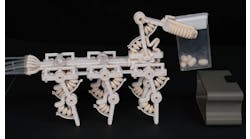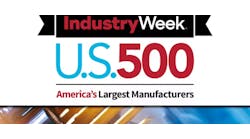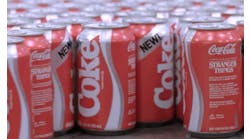In contrast to last week's data from the Institute for Supply Management, which showed the heady pace of U.S. manufacturing's recovery from the 2001 recession slowing a bit in June, the latest composite index of future business activity compiled by the Manufacturers Alliance/MAPI is at a record level. The Arlington, Va.-based alliance's June quarterly figure stands at 80, the highest figure in the index's 32-year history and the third consecutive quarterly record number. It indicates that U.S. manufacturing output is expected to increase during the next three to six months. The previous record was March's figure of 78. "The rise in this [composite] index, along with the strength shown by all the individual indexes [in the most recent survey], indicates that the expansion of manufacturing activity is real and robust," says Donald A. Norman, the economist who oversees the business and public policy research group's outlook survey and prepares the quarterly report. Norman, however, cautions that the alliance's composite index measures direction of change, rather than the absolute strength, of manufacturing activity. The composite index, based on a survey of senior financial executives among Manufacturers Alliance/MAPI members, is a weighted sum of backlogs, inventories, profit margins and prospective shipments. An index figure above 50 indicates that the manufacturing sector of the U.S. economy generally is expanding; a number below 50 signals that it is contracting. Some 60 executives participated in the most recent survey, which was distributed at the beginning of June with responses due by June 25. The backlogs index posted its seventh consecutive quarterly increase, rising to 93% in June from 85% in March. "An accumulation of backlogs -- and a rising backlogs index -- usually occurs when new orders exceed shipments. Thus, the rising backlogs index is a positive sign," explains economist Norman. In another positive sign, the inventory index increased to 61% in June from 46% in March, the first time since March 2001 that this index has been above the 50% mark. "The fact that inventories are now increasing likely reflects rising demand for manufactured goods over the past year as well as expectations that demand will continue to grow throughout 2004," says Norman. "Simply put, most manufacturers now see a need to build up inventories." For the third consecutive quarter, the profit margin index rose in June. It now stands at 79%, up from 73% in March and vastly improved from its all-time low of 19% in March 2001. Finally, the index of prospective shipments advanced to 93% in June from 90% in March, signaling an increase in shipments during the current calendar quarter when compared with the third quarter of last year. "It is worth noting that the third quarter of 2003 marked the beginning of stronger growth in manufacturing after a double-dip recession," says Norman. "The expected year-over-year growth is even more significant because of the more difficult comparison with the year earlier. That is, higher growth in the third quarter of 2003 raised the bar in terms of being able to show year-to-year comparisons."
Popular Sponsored Recommendations
Popular Sponsored Recommendations
Voice your opinion!
Voice your opinion!
To join the conversation, and become an exclusive member of IndustryWeek, create an account today!
Members Only Content
Members Only Content
Sponsored
Sponsored


